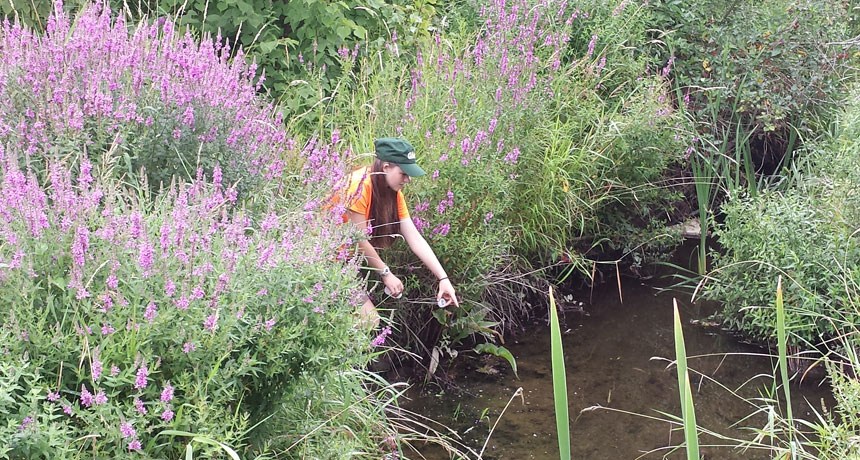Secondary school student designs a filter to save a stream

As a child, Paige Brown, 17, spent time playing in and around her local streams. She thought they must be clean. After all, she played in them and didn’t get sick. But an experiment in science at Bangor High School showed that the water might not be as pristine as she had thought. That led Paige to study the streams — and design a filter to remove a serious pollutant that is in them. The project impressed a number of people. The teen’s work earned her a first place prize at the Intel Science Talent Search.
Two years ago, Paige and her class performed an experiment to measure dissolved phosphorus in water. As part of the testing, students were asked to bring in samples of water. Paige collected a vial from a local stream. When she tested it, she says, “I was blown away.” It had extremely high levels of phosphorus. This element is an important plant nutrient. When soils do not contain enough of it for crops to thrive, farmers and gardeners may add it as a form of fertiliser.
Not all of the fertiliser ends up in the plants, however. Some washes off of the soil during rains. Then it can flow into nearby streams, giving algae and aquatic plants a sudden nutrient boost. The aquatic greenery will respond by growing explosively. Later, though, those plants will die. And their decaying remains will fuel the growth of bacteria. As they chow down, those bacteria will use up much of the oxygen in the water. Without that oxygen, fish and other creatures can suffocate. This whole process — from loads of nutrients to water empty of oxygen — is called eutrophication.
The high levels of phosphorus in Paige’s local stream worried her. She wondered what else might be lurking in the nearby waters. Paige monitored seven local streams in Bangor over a period of nine months. She measured phosphorus, the stream’s pH — or acidity — and how much oxygen was dissolved in their waters. She also collected bacteria from these streams and then grew colonies of them in her school lab.
All seven of the streams Paige studied had high levels of the bacteria E. coli. When she counted the bacteria, the level in one stream “was off the charts.” she says. High levels of this germ can indicate that the water is dangerous to swim or play in. Phosphorus and E. coli levels both spiked after rains, Paige found. Streams that were surrounded by buildings and parking lots were affected most. These are places where rain runs directly into. The teen decided to try to remove the extra phosphorus that was building up in the water after storms. To do this, she designed filters, each about the size of a coin.
“They’re tiny but mighty,” Paige says of her filters. “Each absorbs 127 milligrams of phosphorus.” The teen made a housing for her filters out of a foam block and two hair clips. She wrapped the package with a bit of t-shirt to keep hungry fish at bay. The whole apparatus costs around £3. And the teen isn’t done. Now that she’s got a filter that removes phosphorus, Paige wants to improve it by adding silver nanoparticles. Such tiny silver bits can kill bacteria, such as those E. coli. By reducing the extra nutrients and bacteria in local streams, Paige hopes to end up with water that is as clean as it looks.
.png)